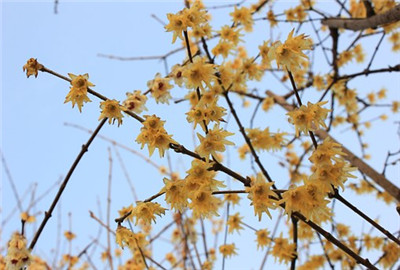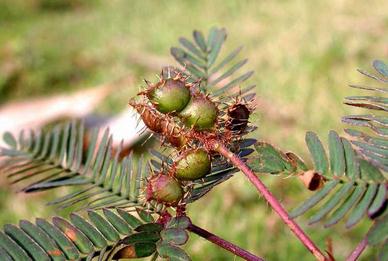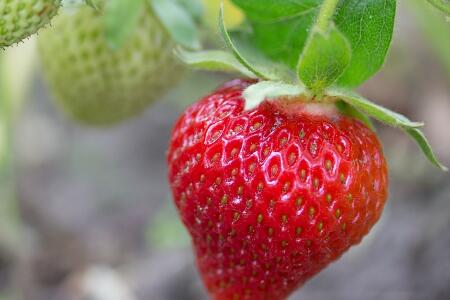How to raise the plum blossom? Can its fruit be eaten?
Wax plum, deciduous shrubs, often clump, wax plum blooming in the depths of winter, fighting cold frost, showing the character of the Chinese nation that will never yield in the face of rape, giving people spiritual enlightenment and the enjoyment of beauty. It is not only suitable for courtyard planting, but also suitable for ancient pile bonsai and flower arrangement and plastic arts. It is an ideal precious flower for flower appreciation in winter. The flowers are fragrant and beautiful, and they are landscaping plants. Roots and leaves can be used medicinally, regulating qi and relieving pain, dispelling cold and detoxification, treating falling, lumbago, rheumatism numbness, wind cold, knife wound and bleeding; flower dissolving summer heat and promoting fluid, treating heart upset, thirst, depression and chest tightness; flower bud oil treating scald. So, how to raise the plum blossom? Can its fruit be eaten?

First, how to raise the plum blossom?
(1) methods of reproduction
The propagation methods of Prunus mume blossom are commonly used in seed, grafting, cutting, ramet and so on.
1. Seed propagation: seedling raising and transplanting. The fruits were harvested from June to July, the seeds were peeled off and stored in wet sand. The seeds were sown in March of the second year. Take out the seeds, rub the wax together with sand in the water, then sow, pay attention to weeding and fertilization at the seedling stage, and cultivate and transplant for 2 years.
2. Grafting propagation: it is best to use real seedlings or ramet seedlings as rootstocks, cutting and leaning grafting are the best. From March to the middle of April, sturdy and longer branches are selected, top shoots are removed, and cut into 6-7cm long scions with 1-2 pairs of buds. Rootstocks are cut at 3-6cm off the ground, cut, mud coated, rootstocks and scions are sealed and cultivated for 3 years.
3. Cuttage propagation: it is better to use summer twigs. After soaking 1min with 1 × 10-4 α-naphthylacetic acid, cuttings are easy to root in shaded plastic sheds.
4. Split propagation: from February to March, the tiller seedlings occurred in the mother plant were dug up and planted. After transplanting, the distance between each row was about 1.3 m, and 1 seedling was planted in each hole. Each year, weeding and topdressing are carried out once a year in the early spring and section season, and the fertilizer is mainly composed of human and animal manure. In order to promote flowering, cut the branches short and peel off the top from March to April every year.
(2) cultivation methods
1. Ploughing: ploughing is carried out after flowering, with a depth of 20-25cm, slightly shallower under the crown to avoid root damage.
2. Fertilization: applying base fertilizer in combination with ploughing after flowering in spring. Wax plum likes fertilizer, but it is forbidden to apply thick fertilizer. Ring or strip fertilization ditches can be opened along the outer edge of the crown, with a depth of 20-30cm. The amount of high-quality and mature farm manure applied to adult trees per mu was 3000-5000kg per mu and the amount of fertilizer applied to young trees for 1-2 years was 1 peg / mu of adult trees. Topdressing was applied once during flower bud differentiation in late June. Compound fertilizer 20kg was applied per mu along the outer edge of the crown.
3. Watering: Chimonanthus is resistant to drought, but it is also necessary to replenish water in the dry and early season. In July, proper soil moisture should be maintained during flower bud differentiation, and during flowering, the soil should be kept moderately dry to reduce flower drop.
4. Shaping and pruning
① plastic surgery: commonly used multi-dry plastic surgery. After planting, 3-4 branches which are robust and evenly distributed around are selected as the trunk (when there are no branches, 4-5 full buds on the ground are re-cut), and 3-5 nodes are pruned, which are used as trunk extension branches and lateral branches. Pay attention to the main branches do not overlap each other, and timely cut off the lower root tillers, sprouting and weak branches, withered branches.
② sprouting: the leaf buds of Chimonanthus przewalskii germinated around 50cm, wiping out the dense, introverted and close to the ground buds to reduce nutrient consumption. In the rainy season, cut off the miscellaneous branches, useless branches, disturbing tree-shaped branches and wind-shielding branches in time.
③ pruning before flowering: leave a pair of leaf buds on the flower buds of some long branches before the flower buds expand after defoliation, cut off the upper part without flower buds, cut off withered branches, disease and insect branches, over-weak branches and dense, overgrown non-flowering branches and root tillers without renewal, in order to save nutrients. When pruning before blooming, you should be careful not to cover it up or touch it so as not to touch the flower bud.
④ pruning after blossom: after blooming, pruning should be carried out in time. The main task is to remove old branches, withered branches, overdense branches and overgrown branches, and to retract weak main branches or groups of branches to achieve the purpose of rejuvenating branches and trees. However, for the main branches that are too high, too long and too strong, they can retract at the larger oblique branches, take the lead with weak skills, and control branch height, branch length and branch potential to achieve the purpose of balancing branch potential and tree potential. The annual branches were cut short, the extended branches of the main branches retained 30-40cm, the other strong branches retained 10-20cm, and the weak branches left a pair of buds or thinning. After the weak branches are thinned, new techniques can grow at the base. In addition, after the flower fade, it is necessary to pinch off the residual flowers in time (when there is no seed left), so as to prevent fruiting and consuming nutrients, so that the branches will be thick and flowers will multiply in the coming year.
(3) Prevention and control of diseases and pests
There are few diseases and insect pests in Chimonanthus chinensis, and stem borer occasionally occurs. The injured branches can be cut off and burned together with the pests in combination with dormant pruning.
(4) harvesting
Chimonanthus fresh cut flowers are generally harvested at the beginning of their buds and put in a cool place after harvest.
Second, can the fruit of preserved plum be eaten?
The fruit of Lamei is inedible. It is the fruit of plant Chimonanthus (Chimonanthus mume). Medicinal name: Tubadou, poisonous, can be used as a laxative, can not be eaten by mistake. The fruit of dried plum is green before ripening and does not turn grayish brown until it is ripe.
Time: 2019-04-11 Click:
- Prev

[excuse me] what does mimosa look like? Is it poisonous? How do you raise it?
Mimosa is a perennial herb or subshrub of Leguminosae, which is named mimosa because its leaves respond to heat and light and close immediately when touched by external forces. So what does the mimosa look like? Is it poisonous? How do you raise it? Let's take a look at it right away.
- Next

What if the leaves of strawberries, blueberries, watermelons and cantaloupes turn yellow? What is the cause?
Strawberries, blueberries, watermelons and cantaloupes are prone to yellowing leaves during their growth. Do you know what causes them? What should I do? In fact, in junior high school biology textbooks, there is an introduction to the role of various nutrient elements that affect plant growth.
Related
- Fuxing push coffee new agricultural production and marketing class: lack of small-scale processing plants
- Jujube rice field leisure farm deep ploughing Yilan for five years to create a space for organic food and play
- Nongyu Farm-A trial of organic papaya for brave women with advanced technology
- Four points for attention in the prevention and control of diseases and insect pests of edible fungi
- How to add nutrient solution to Edible Fungi
- Is there any good way to control edible fungus mites?
- Open Inoculation Technology of Edible Fungi
- Is there any clever way to use fertilizer for edible fungus in winter?
- What agents are used to kill the pathogens of edible fungi in the mushroom shed?
- Rapid drying of Edible Fungi

